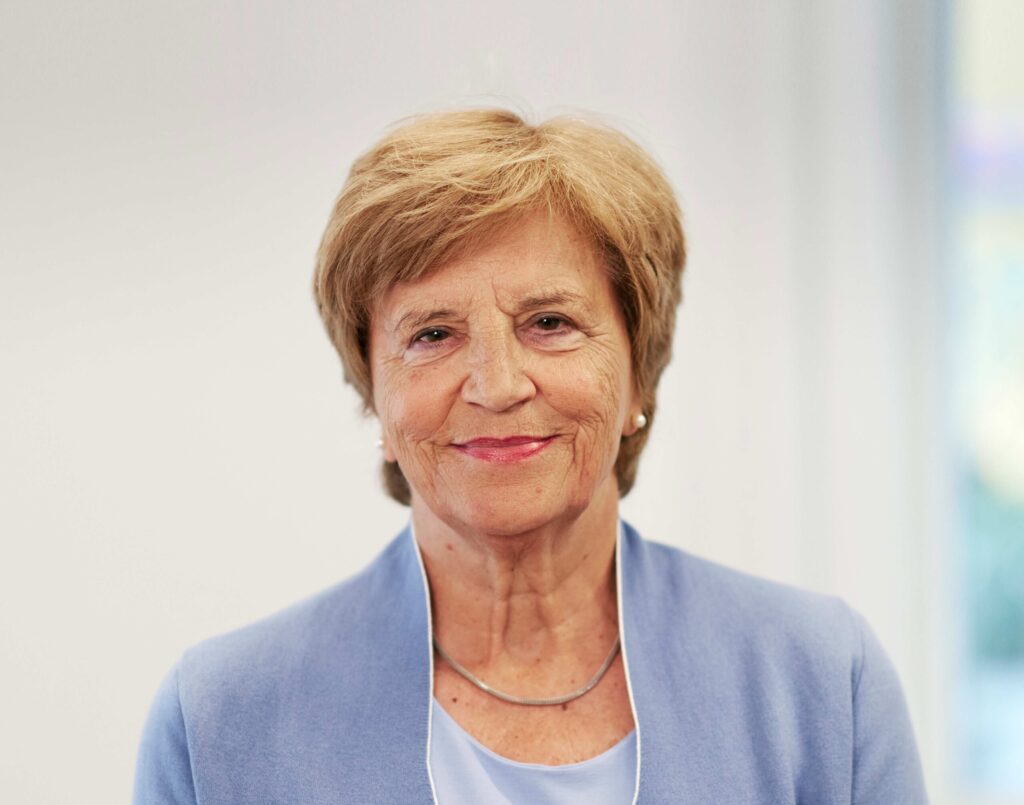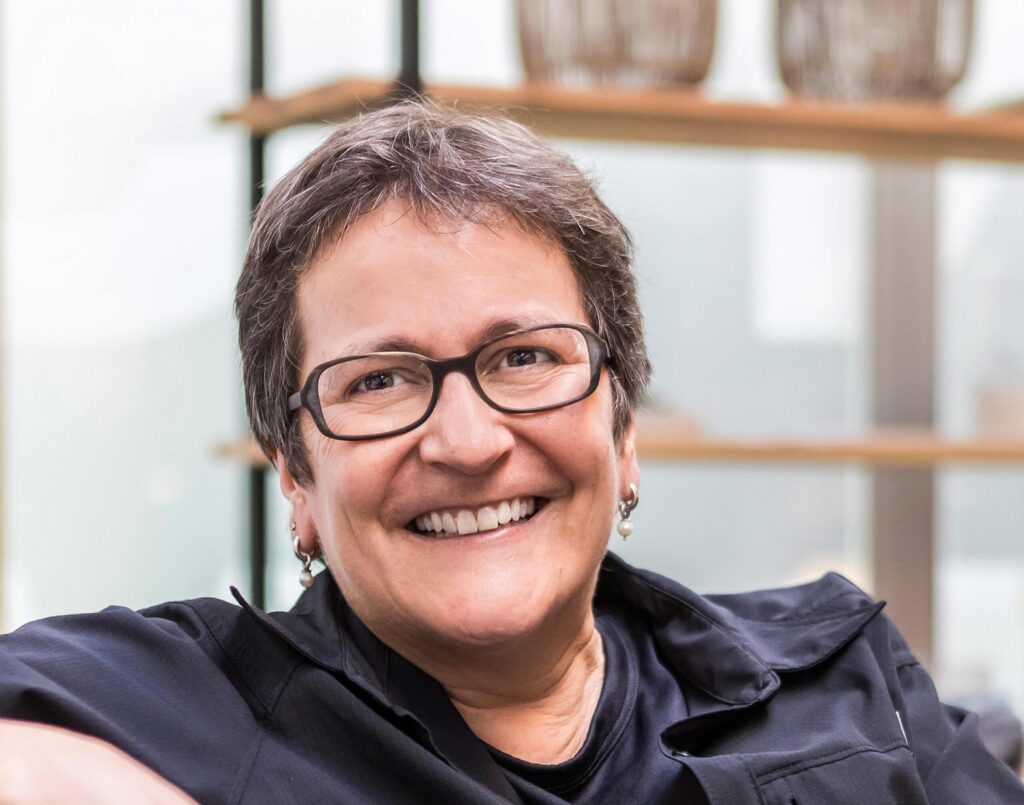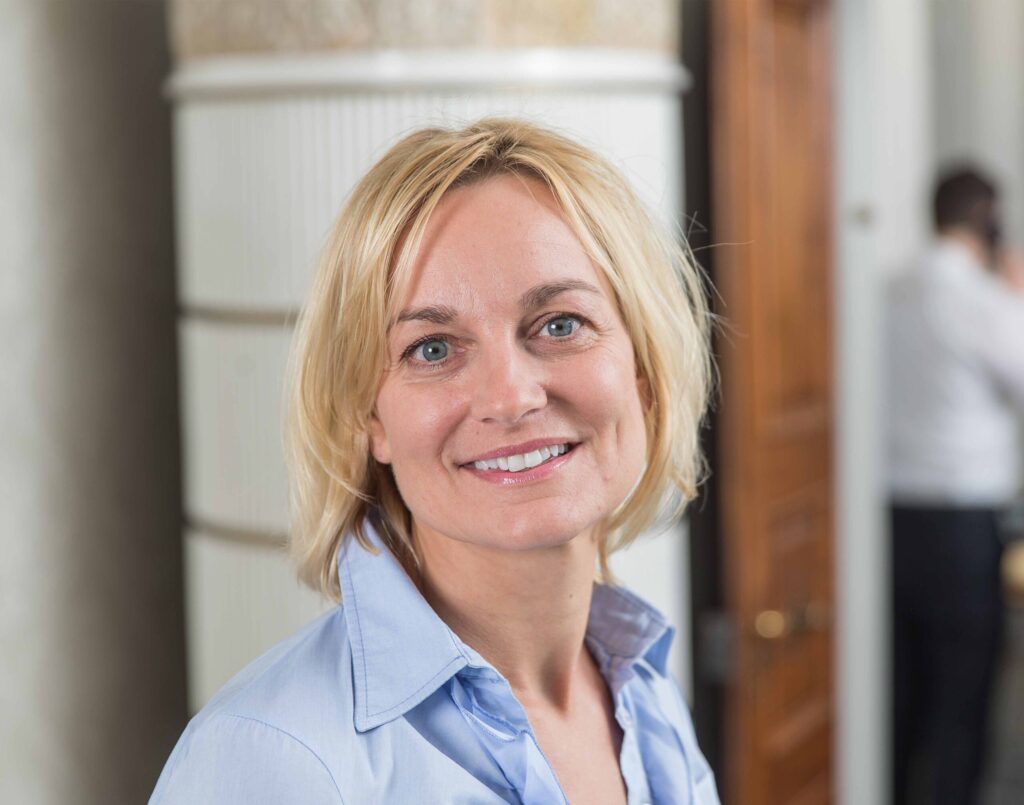Foundations cooperate with a range of partners. This allows them to pool their financial resources, share knowledge and generate added value for stakeholders and society as a whole.

‘The Income Study marks the first time we’ve laid down one of our collaborations in a contract,’ says Brigit Wehrli-Schindler, president of the board of trustees of the Walder Stiftung. This charity is committed to ensuring that the elderly can access good living conditions and enjoy an excellent quality of life. The Income Study explores socially relevant differences in income across society in Switzerland.
The Migros Culture Percentage also took part in the project, entitled ‘Elderly people’s freely disposable income in Switzerland’ or the Income Study. Migros offers support to projects in the fields of culture, society, education, leisure and business, often within collaborations, on the basis of the commitment made by the company’s founder, Gottlieb Duttweiler.
‘The collaboration for the income study came about as part of the “old-age” working group within SwissFoundations, a body that brings together Swiss charities offering funding to external projects,’ explains Cornelia Hürzeler. She is Head of Social Projects at the Culture and Social Office of the Federation of Migros Cooperatives. ‘Nine charities quickly came together as a consortium to commission the study.’

Working as equals
‘The new thing about this alliance was that the funders approached the research institute with a shared idea,’ says Brigit Wehrli-Schindler. She explains that the opposite would normally be the case, with researchers seeking funding for their projects from charities. If a project wins funders over, it can be financed by multiple charities, all of whom know about each other. ‘In the Income Study project, researchers and representatives from charities held regular discussions about the progress of the project and about communicating its findings,’ she says. The roles were set out in a contract, but its success lay in the fact that the partners in the collaboration treated each other as equals. Unlike in a sponsoring arrangement, preference was not given to one major donor. ‘It is important that everyone has the same chance to shine, regardless of how much they’ve put into the pot,’ says Cornelia Hürzeler. To ensure that this works, you need trust and a careful approach, alongside clearly defined roles. A good collaboration strategy is founded on ensuring that everyone works together to do as much as they can and shares a commitment to the task at hand. ‘That’s not always something you can plan,’ says Cornelia Hürzeler. If it works out, everyone wins. ‘Migros Cultural Percentage carries out lots of activities on its own, but collaborations encourage dialogue. In turn, they create a sense of community,’ says Cornelia Hürzeler. She also explains that financial opportunities are much greater when several charities team up together. ‘And you also see a lot more expertise coming together, particularly in terms of research skills and communication,’ she explains. Brigit Wehrli-Schindler also emphasises the added value of this. She says: ‘The discussions among the charities help to expand their specialist knowledge of the topic in question.’ Any issues are worked through in detail, and the charities are encouraged to exchange ideas for everyone’s benefit. ‘Each charity has a different perspective on the project, depending on their objectives,’ she says. The size of the charity, however, has little bearing on such discussions.

Networking
The Beisheim Foundation is also involved in launching and assisting with collaborative projects, such as the Income Study. Recently, it was involved in a charity collaboration on ‘good-quality care in old age’. ‘Collaborative projects give us an excellent opportunity to network with other charities and stakeholders in the field,’ says Managing Director Patrizia Rezzoli.

‘By working with them, we can develop viable solutions to major social challenges.’ Alongside grouping together tasks and generating an impact, she sees the primary advantages of this as the dialogue and networking, learning and benefiting from each other. She believes that the mutual exchange of ideas within such projects is hugely valuable. And even the projects themselves benefit from sustained and wider support thanks to the collaboration. Patrizia Rezzoli adds: ‘In fact, the Beisheim Foundation’s work goes beyond simply putting money on the table: the notion of shaping projects as a partnership is behind everything we do. That’s why we actively contribute our knowledge, network and skills to ideas and concepts that we develop and support in conjunction with our partners.’
Win-win
The Edith Maryon Foundation also works with other organisations, as demonstrated by its institutional collaboration with Greenpeace. ‘Sometimes a donor is interested in giving real estate to Greenpeace,’ explains Ulrich Kriese, member of the board responsible for public relations at the Edith Maryon Foundation. Often, owners are under the impression that their home will be preserved if they donate it, thinking that it will be managed along socially responsible, eco-friendly lines. However, Greenpeace is not a property manager, so the charity would instead sell the property to the highest bidder. This is where its collaboration with Edith Maryon comes in. This foundation’s objective is to stop people using residential and business properties for financial speculation, aiming instead to preserve them for use as affordable homes and commercial properties. Ulrich Kriese says: ‘In this case, the house is signed over to us. We pass the net value onto Greenpeace, and everyone wins.’
The desire to keep managing the property as it was before is fulfilled, Greenpeace receives funds that it would otherwise not have had and Edith Maryon can secure another property for the greater good in the long term. Edith Maryon works with various partners in terms of using the building. They are often cooperatives and associations, but charities also crop up from time to time.

If necessary, Edith Maryon acts as a guarantor for tenants’ deposits, and, in addition, it works with charities that look after socially marginalised groups. ‘People who find it hard to find a home on the housing market,’ as Ulrich Kriese puts it. The Markthalle in Basel, home to indoor stalls and shops, is a special case within Edith Maryon’s portfolio. ‘This project revolved around keeping the core concept of the Markthalle, with its common land in the middle, as a public space,’ he says. ‘Someone else manages this property for us, too. In this case, it is in the hands of Markthallen Basel AG.’

A minor miracle
Today, the Markthalle is just one property of many in an impressive portfolio managed by the foundation. Looking at their portfolio, it’s hard to believe how little capital the founders had when they started. ‘The secret to our success is not a secret – it’s a minor miracle,’ says Ulrich Kriese. The three founders each put in 4,000 Swiss francs. In fact, the organisation’s success hinged on their deep-seated conviction and the concept behind the foundation. It has received a lot of support to date, whether in the form of donations, gifts, legacies or interest-free loans. The philanthropists who invest their money in a sub-foundation within the Rütli Foundation also want to make a difference. A sub-foundation within the Rütli Foundation will set you back 100,000 Swiss francs.

‘For an independent foundation to have an impact, you need seed capital of five to ten million Swiss francs,’ says Managing Director Claudia Ineichen. Apart from the start-up costs, the annual costs for administration, accounting, audits and the Supervisory Authority for Foundations all mount up. This is why an umbrella foundation with sub-foundations starts to look appealing: the set-up costs are very low, and its tax-exempt status is even already regulated via the umbrella foundation.
This keeps costs down and ensures that practically 100 percent of the money goes towards its projects, she says. The sub-foundations take the form of limited-term trusts, meaning that, over the years, the capital can make a difference to the charitable projects that have been selected.
It’s all about impact – not preservation
‘Above all, the new philanthropists want to make a difference. It’s not about making themselves immortal,’ explains Claudia Ineichen. If someone decides to set up their own foundation with 500,000 Swiss francs, their objective should not be to keep this capital intact, hardly giving out any funds for the foundation’s purpose because they’re only permitted to make use of the yield generated by the capital. ‘You can have more of an effect by giving out 50,000 Swiss francs each year and using up the capital,’ she says, ‘which means that the money goes to society.’ It is fitting that the sub-foundations are not interested in publicity. Claudia Ineichen: ‘A sub-foundation is a good way to have a philanthropic impact, and remain anonymous.’ At the same time, it gives people the chance to put their own wishes into practice, in a targeted fashion. Every sub-foundation has their own contract, and while the purpose of the umbrella foundation is formulated in relatively broad terms, it is tightened up via the sub-foundations’ contracts. Claudia Ineichen explains the advantages of this solution: ‘It means you can adjust how the money is used at a later point. If someone wants to start offering support in new areas, they can. Of course, they can only do so if this does not violate the requirements of their charitable status.’ The Rütli umbrella foundation makes use of another perk: it takes a very active approach to networking. ‘There are sub-foundations who are nevertheless able to take on projects. In that case, we have a look at the projects and organisations we’ve been associated with for years, on behalf of the donors, to see if any of them fit,’ says Claudia Ineichen. As part of this, she notes that increasing numbers of charities are entering into collaborations in the interests of putting projects into practice. The ideal situation is when a donor commits to making a donation for more than a year, which means that project managers can plan for the longer term.
Many hands make light work
Collaboration between various aid organisations is behind a ‘brand’ that most people in Switzerland are familiar with, though the majority are more likely to associate it with consumer goods than with charity work: Max Havelaar. ‘At present, the charitable organisations are most noticeable on the board of trustees,’ says Renato Isella, CEO of Max Havelaar.
They make up around half the members of the board and determine the strategic direction that the organisation is to follow. ‘Plus, we work with the aid organisations in terms of communications, too,’ he says. It was only logical for the aid organisations Brot für alle, Caritas, Fastenopfer, Heks, Helvetas and Swissaid to set up a foundation in 1992. Simply put, it was the perfect form for them to use. The aim was not to shine a spotlight on the organisations involved; the foundation’s objective was the only thing that mattered. Its sole focus? Fair trade. ‘This form has proved to be successful,’ says Renato Isella. That said, the Max Havelaar Foundation needed to collaborate with such major distributors as Migros and Coop to make people aware of the issue, ensuring that it could have an impact.

Even when it was set up back in 1992, its explicit objective was to get on the shelves of at least one of these retailers. ‘We wanted to make fair trade something that was mainstream, not just for niche products,’ says Renato Isella. This impact was included in their plans from the off. ‘As a result, we got used to advocating for our values in front of big companies and putting them into practice,’ he says. Max Havelaar does not trade the products itself. ‘We allow partners to use our label, provided they meet Fairtrade standards,’ says Renato Isella. He is aware that there are retailers that want to add one or two Max Havelaar products to their range for the sake of projecting a sustainable image. In these instances, he seeks out dialogue with the retailers in question: fair trade is a matter close to people’s hearts and should not be used to pull the wool over people’s eyes. Most companies are committed to the cause, and, for them, the label is an important way of proving this commitment.
Making use of synergies
The label guarantees that Fairtrade standards are complied with. These standards apply to every company involved – in all four corners of the globe. They are laid down at the general meeting of the umbrella organisation Fairtrade International, where votes are distributed equally across the north and the south. At the heart of this international movement are the 1.7 million farmers and workers in developing countries. Similarly, national Fairtrade organisations in 25 industrial countries, such as Fairtrade Max Havelaar, also play a role. ‘By talking to each other, we can learn from each other, make use of synergies, simplify processes and boost our impact,’ says Renato Isella. ‘International collaboration plays an important role in this.’ We need to increase awareness within our society to ensure that producers in the south can benefit from fair trade. We need everyone to come together if we want to improve living conditions for disadvantaged people in developing countries in the long term: ‘The state provides the framework, companies take on their responsibilities – and charities help them via their advice, their expertise and their independence.’ Brigit Wehrli-Schindler also understands the importance of drawing politicians’ attention to important topics. These collaborations can help put charities (and their concerns) on a stronger footing in their interactions with the state. In turn, charities can play a role in putting certain topics on the political agenda – such as the issue of caring for the elderly and how this is financed. Brigit Wehrli-Schindler says: ‘Collaborating with charities and research institutes enables us to expand our knowledge of current issues.’ Migros Cultural Percentage is also involved in collaborations at various levels. ‘We’re collaborating with the state, the market and civil society,’ says Cornelia Hürzeler. ‘Temporary short-term initiatives are simply perfect. We can’t assume that everyone involved will share the same objective at the same time.’ This is based on an understanding of how organisations function: they develop and change, and take on new objectives if the old ones no longer work for them.
Bridging the gap

Ulrich Kriese describes their organisation’s relationship with the state as follows: ‘We bridge the gap that the state can’t (or can no longer) fill to an acceptable extent.’ In Basel and elsewhere, there is demand for space that is not let at sky-high prices for social, cultural and other needs. The Edith Maryon Foundation hopes to meet this demand by securing the plots required for this and making them available to those who need them. But the foundation is not just focusing on this gap alone: it is also willing to share its concerns with the political sphere and go out on a limb. The ‘Neue Bodeninitiative’, or ‘New Land Initiative’, was launched in Basel in 2015 in collaboration with Stiftung Habitat and SVW Nordwestschweiz (umbrella organisation of housing cooperatives in Northwestern Switzerland). Going forward, the land owned by the canton will not be put up for sale. Instead, it will remain in the canton’s possession, with people only being given the right to build on it. In turn, this means that the canton can keep its hands on the land in the long term. ‘It goes without saying that the idea met with some resistance,’ recalls Ulrich Kriese. ‘Despite this, the initiative was backed by a two-thirds majority in 2016.’ An impressive success for an issue relating to civil society.


